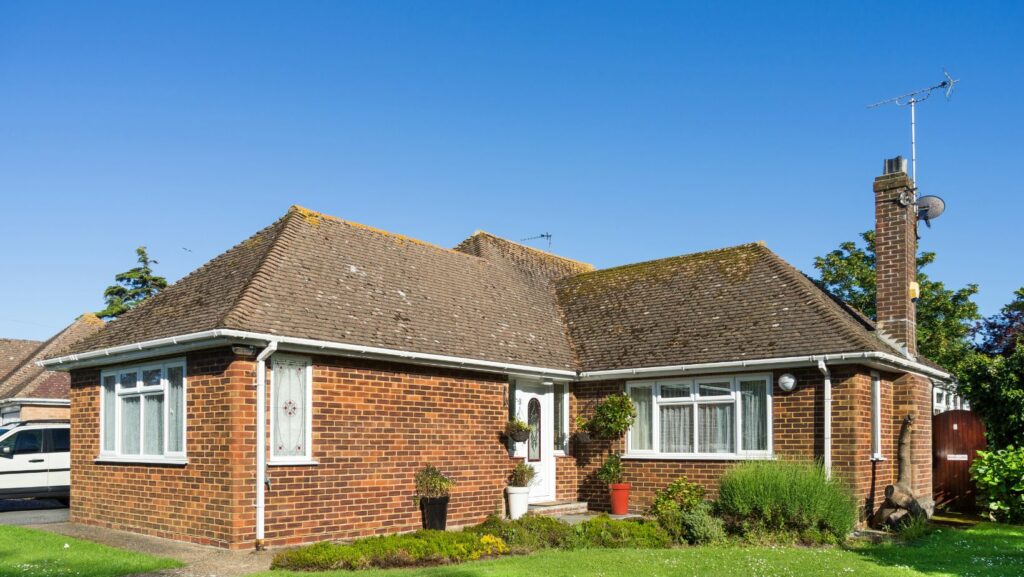Stepping into a bungalow, one’s immediately met with a sense of comfort and coziness. It’s the charm of the bungalow architectural style, a design that’s as timeless as it is appealing. Originating in South Asia, the bungalow style has spread across the world, adapting to various climates and cultures while preserving its unique character.
This article delves into the distinctive features and history of bungalow architecture. It’ll explore how this style has evolved over the years, and why it continues to be a popular choice for homeowners today. Whether you’re an architecture enthusiast or simply curious about this beloved style, you’re in for an enlightening journey into the world of bungalows.
Bungalow Architectural Style
 Popularity of the bungalow style originated in the late 19th century in India, brought on by the British who valued the style’s simplicity, cost-effectiveness, and suitability towards the region’s hot climate. By the early 20th century, this construction style found its way to America, particularly flourishing in California, with its favorable climate akin to South Asia’s. Characteristics such as low-slung, single-story structures, wide, overhanging eaves, and porches became quintessential features and remain part of the allure today. In the 1920s, the bungalow style was so popular that one could order pre-cut materials to construct their own home, directly from catalogs. As times progressed, influences from different regions – like Spanish Colonial revitalization or Chicago’s prairie style – fused with the traditional bungalow style, leading to variants such as the California or Chicago bungalow. Irrespective of these changes, their charm, affordability, and practical design keep them relevant even in the 21st century.
Popularity of the bungalow style originated in the late 19th century in India, brought on by the British who valued the style’s simplicity, cost-effectiveness, and suitability towards the region’s hot climate. By the early 20th century, this construction style found its way to America, particularly flourishing in California, with its favorable climate akin to South Asia’s. Characteristics such as low-slung, single-story structures, wide, overhanging eaves, and porches became quintessential features and remain part of the allure today. In the 1920s, the bungalow style was so popular that one could order pre-cut materials to construct their own home, directly from catalogs. As times progressed, influences from different regions – like Spanish Colonial revitalization or Chicago’s prairie style – fused with the traditional bungalow style, leading to variants such as the California or Chicago bungalow. Irrespective of these changes, their charm, affordability, and practical design keep them relevant even in the 21st century.
Key Characteristics of Bungalow Architectural Style
 Unveiling the key elements that define bungalow architecture uncovers a distinct aesthetic marked by practicality and simplicity. Leading amongst its features is the low, ground-hugging structure, often featuring one-and-a-half stories. Coupled with its unmistakably wide, overhanging eaves, these aspects provide a soothing shade, imperative for practicality in hot climates. Porches, typically front-facing under a projecting roof, add another unique dimension, serving as an outdoor living space, promoting kinship with nature. Internal features like open floor plans and a pronounced horizontal orientation highlight a harmonious unity of external and internal spaces, emphasized in variants like the California and Chicago bungalows. Distinctive roof forms, such as gabled or hipped roofs, and a handcrafted and rustic appearance further exemplify the bungalow style, reinforcing an aura of romantic simplicity.
Unveiling the key elements that define bungalow architecture uncovers a distinct aesthetic marked by practicality and simplicity. Leading amongst its features is the low, ground-hugging structure, often featuring one-and-a-half stories. Coupled with its unmistakably wide, overhanging eaves, these aspects provide a soothing shade, imperative for practicality in hot climates. Porches, typically front-facing under a projecting roof, add another unique dimension, serving as an outdoor living space, promoting kinship with nature. Internal features like open floor plans and a pronounced horizontal orientation highlight a harmonious unity of external and internal spaces, emphasized in variants like the California and Chicago bungalows. Distinctive roof forms, such as gabled or hipped roofs, and a handcrafted and rustic appearance further exemplify the bungalow style, reinforcing an aura of romantic simplicity.
Bungalow Styles Around the World
 While the bungalow style found its roots in India, it quickly spread across the world, assuming distinct personalities influenced by local architectural trends. In Britain, this style took on a more compact design, favoring arched entrances and parapet-walled roofs. Australia’s “Queenslanders” offer variance with elevated structures, wide verandas, and timber construction, adapting to the nation’s tropical and subtropical climates. In contrast, South African bungalows, known as “Rondavels,” feature rounded exteriors and conical thatched roofs, resonating with traditional African dwellings. America’s California bungalows flourish with broad, overhanging roofs and abundant windows, flaunting a profound respect for nature. Canada dovetails with this style, infusing it with the country’s distinctive Arts and Crafts vein. Thus, the bungalow, while maintaining its core principles, reflects a diverse range of designs mirroring regional architectural nuances.
While the bungalow style found its roots in India, it quickly spread across the world, assuming distinct personalities influenced by local architectural trends. In Britain, this style took on a more compact design, favoring arched entrances and parapet-walled roofs. Australia’s “Queenslanders” offer variance with elevated structures, wide verandas, and timber construction, adapting to the nation’s tropical and subtropical climates. In contrast, South African bungalows, known as “Rondavels,” feature rounded exteriors and conical thatched roofs, resonating with traditional African dwellings. America’s California bungalows flourish with broad, overhanging roofs and abundant windows, flaunting a profound respect for nature. Canada dovetails with this style, infusing it with the country’s distinctive Arts and Crafts vein. Thus, the bungalow, while maintaining its core principles, reflects a diverse range of designs mirroring regional architectural nuances.
Modern Interpretations and Adaptations
From their humble beginnings in India to their widespread popularity in America and beyond, bungalows have stood the test of time. They’ve adapted to regional influences and embraced modern design elements, all while preserving their iconic features. Today, they’re not just remnants of the past, but vibrant expressions of architectural diversity. Whether it’s Britain’s parapet-walled roofs, Australia’s elevated “Queenslanders”, South Africa’s thatched-roof structures, or Canada’s Arts and Crafts-inspired designs, bungalows continue to evolve. They’ve become more than a housing style; they’re a testament to architectural adaptability and ingenuity. So, whether you’re an architecture enthusiast or a potential homeowner, understanding the bungalow architectural style can give you a new perspective on this enduring and versatile housing option.

